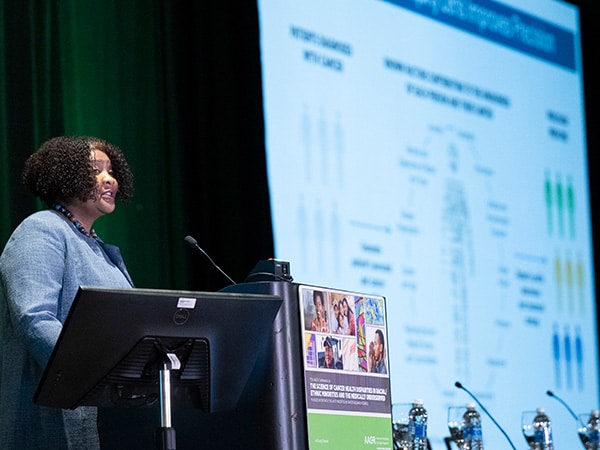Genetic Mosaicism: How Mutations That Arise in the Embryo May Cause Cancer Later in Life
Although a basic assumption of genetics is that all the cells in our body share the same DNA, research has shown that the true story is more nuanced than that. The human body is actually a complex pattern made up of clusters of genetically distinct cells that, despite the existence of high-fidelity DNA repair mechanisms, inevitably accumulate mutations over time.
Taking into account the size of our genome and the rate at which mutations occur, it is estimated that up to 10 mutations are introduced in each daughter cell at every cell division, suggesting that no two cells are exactly identical in our body, and a newborn can carry more than 120 mutations in each cell. Only a tiny minority of these mutations, however, may ultimately cause diseases.

A mutational event occurring in the embryo can propagate to the adult organs and tissues that are derived from the single cell in which the alteration originated, giving rise to a pattern in which some groups of cells carry the mutation and others do not. Such a pattern is defined as genetic mosaicism.
A mosaic is an artwork composed of many pieces of different materials inlaid together to create a picture. Borrowing the term from art, genetic mosaicism describes the presence of two or more genetically diverse cell populations in an organism.
Can genetic mosaicism lead to cancer?
In most cases, malignant transformation is driven by somatic mutations that occur at some point in life in a specific cell or tissue. Some individuals are born with germline (inherited) mutations in cancer susceptibility genes (CSGs) that put them at higher risk for developing certain cancers, such as hereditary breast and ovarian cancer, or cancer syndromes.
Research has indicated that mosaicism affecting CSGs can be associated with hereditary predisposition syndromes. However, the potential contribution of mosaic mutations to sporadic cancer was not known, partly due to the difficulty of detecting low-frequency mutations through conventional genetic testing.
Next-generation sequencing technologies have allowed for higher sensitivity in detecting mosaicism and shed light on the genetic diversity occurring within an organism.
In a study recently published in the AACR journal Cancer Discovery, the authors used an FDA-approved genetic test called MSK-IMPACT that can detect mutations in more than 500 cancer-related genes to determine whether mosaic variants arising during embryogenesis in CSGs could be related to the development of cancers that are thought to be sporadic.
Comparing the genetic makeup of matched tumor and blood samples from more than 35,000 patients with cancer, the study revealed the presence of 36 pathogenic mosaic variants in several CSGs, with TP53 and RB1 being the most commonly affected. Analysis of tumor samples from the individuals carrying the pathogenic variants confirmed that these tumors had features consistent with alterations in the respective genes.
For example, apparently sporadic ovarian and breast cancers from individuals who were found to carry BRCA2 mosaic variants displayed genomic instability and other features associated with deficiency in homologous recombination DNA repair. Additionally, inactivation of the second allele of the mutated gene occurred in the vast majority of these tumors. These observations indicated that the mosaic variants identified likely played a causative role in the development of these patients’ cancers that appeared sporadic.
Notably, the authors found that among patients carrying mosaic variants who underwent previous germline genetic testing, most had been reported as not carrying germline mutations, and only half of those who had an evaluable medical history met the criteria for germline genetic testing, suggesting that in certain cases when a germline mutation is ruled out, mosaicism may be the culprit.
In patients who had previously undergone tumor and normal tissue sequencing, most of the mosaic alterations had been wrongly reported as tumor-derived mutations or not reported at all.
Since the CSG mosaic variants were detected in tissues derived from different embryonic lineages, the researchers estimated that they arose early during the development of the embryo.
This study unveiled an important contribution of mosaic mutations that occur during embryonic life to cancers that are regarded as sporadic, with potentially significant implications. For one, the study demonstrated that mosaic variants can now be detected using a clinical-grade sequencing assay. Furthermore, knowing that a patient carries such mosaic mutations could inform treatment, as some of them represent indications for targeted therapies. This also provides information on the patient’s risk of developing other cancers or potentially transmitting the mutation—and the relative risk—to their offspring.
The connection between somatic mosaicism and cancer was discussed by Veronica Kinsler, MBBCh, PhD, at the AACR Annual Meeting 2022 in a session dedicated to Precancer Discovery Science. Kinsler noted that “mosaic disorders sit somewhere between inherited genetic disease and somatic cancers.” Read more about her research and the session here.



